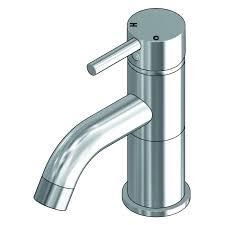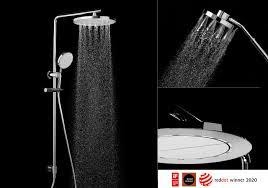The most often encountered tapware issues and their resolutions
Numerous complications might emerge when it comes to tapware, and we often get a great number of inquiries on this subject. As a consequence, we’ve compiled a list of our most frequently asked questions, along with some responses, to aid you.
How did my faucets begin to drip or leak?
To determine why your faucets are leaking, you must first determine the kind of tapware faucet.
Hot and cold water pillar faucets in the traditional style
If your tapware faucets have separate hot and cold handles, the most common reason for leaky faucets is a faulty seal or washer. If you transfer your seals and washers correctly to a local repair shop, you should be able to get a replacement at a reasonable cost.
Faucet mixers
A leak in bathroom mixer tapware is often caused by a fault with the tap’s ceramic cartridge. If you take the cartridge to a local plumber’s merchant, you should be able to get a replacement cartridge.
Is it straightforward to replace a faucet?

The ease with which tapware is installed varies by tap and location, but for the majority of do-it-yourself enthusiasts, changing a faucet is a rather simple task.
My faucets have been depressurized totally.
A drop in the pressure at your tapware faucets might be caused by a multitude of factors. While we’ve provided some suggestions below, in this case, it’s best to call a plumber who can analyze the matter on-site.
Is your cold kitchen faucet working properly?
Water often enters your home via the cold kitchen tapware faucet first; if water flows freely from this faucet but not from other faucets around the house, there may be an internal plumbing issue.
Are the emergency stop valves on your tapware entirely open?
Check for frozen pipes.

If the stop tapware valve is not entirely open (which is often positioned under the kitchen sink), it may restrict water delivery to the residence. Counterclockwise turn the faucet as far as possible to ensure that it is fully open.
During the winter months, it is fairly common for exposed tapware pipes to freeze. This increases the possibility of the pipes expanding and rupturing. Any visible pipes should be inspected for signs of damage or freezing.
Speak with your neighbors
Are your immediate neighbors seeing a drop in tap pressure as well? If this is the case, an issue with the external tapware‘s water mains may exist, in which case you should contact your water supplier or local council. Otherwise, an issue with your internal plumbing may exist.
Are you simultaneously running many water systems?
If the demand for water in your home is abnormally high at any point in time, this might have an influence on the pressure. Is your water pressure reducing while you operate the washing machine or shower? Conduct a tapware test by running the tap with all other sources turned off.
Conduct an examination for the presence of an airlock.
Reduced water pressure may be caused by trapped air in the pipes of your tapware faucet. While there are many techniques for correcting an airlock in your taps, it is suggested that you call a qualified plumber.
Which technique is the most effective for eliminating limescale from faucets?
While there are several professional tapware cleaning treatments that may effectively remove unattractive limescale from your faucets, lemon and vinegar are two simple and effective household components that can restore the shine to your faucets.
Attach a lemon or a cup of vinegar to the spout of your faucet and leave for about an hour (longer if the limescale is more resistant); this will help break down the limescale and make it simpler to clean with a brush. Other areas of the tap may be treated by soaking a cotton wool pad in vinegar or lemon juice and applying it to the affected region.
When planning a bathroom, kitchen, or other wet area construction or remodeling project, keep in mind that tapware selection is crucial for each setting. Consider the following aspects when picking the tapware that best suits your requirements. Visit https://hgic.clemson.edu/factsheet/a-clean-safe-healthy-kitchen-home-the-importance-of-keeping-your-kitchen-clean-and-safe/ to read about a clean, safe, healthy kitchen & home: the importance of keeping your kitchen clean and safe.
1. The design of the room
Match the style of your tapware to the overall decor of the area. Sleek, clear lines are required for modern and contemporary design. For an ultra-modern aesthetic, choose square or rectangular tapware with angular lines, while a traditional, rural, or eclectic design may integrate a number of tapware types, such as the classic three-piece tapware with typical turned handles and curved spouts.
2. Tapware Construction Materials
It is vital to choose high-quality tapware, such as DR brass and non-toxic polymers and elastomers, and to have it properly installed. They must have high-quality components such as the cartridge, the aerator, the hoses, and the rubber washers. Superior materials assure the safety of your drinking water, as well as the durability and lifetime of your faucets and faucet accessories.
3. Tapware’s technical specifications
Consider any unusual size needs prior to making your order. When shopping for kitchen faucets, for example, examine the spout height, reach (length), and swivel capabilities to ensure that tall stock pots and huge oven pans do not get clogged. Additionally, you may like to take into account the size and depth of your kitchen sink to ensure that the two components are properly matched. Bear in mind that a deeper sink results in a taller spout. Apart from bench (hob) installation, you should investigate ‘off the wall’ or wall-mounted options. The same considerations must be considered while building toilets. If, for example, you have an above-mounted shaving cabinet with outward swinging doors, you should examine if the height of the basin’s tapware is restricted, or whether a wall-mounted mixer would be more suited given the tabletop’s limited width.
4. Mounting Techniques
As noted briefly before, another consideration is the mounting style of your tapware faucets and fixtures. While shower enclosures often need wall-mounted mixers, bathtubs may require either wall-mounted or hob-mounted mixers. Additionally, you may pick between a vanity-mounted mixer tap and a mixer combo (a combination of a mixer and a spout) positioned on the wall above the basin. Consider also the accessibility of pipe required for pre-installation behind the wall, regardless of whether in-wall or off-wall mixers are used. Click here to read about The Advantages and Disadvantages of Black Tapware
